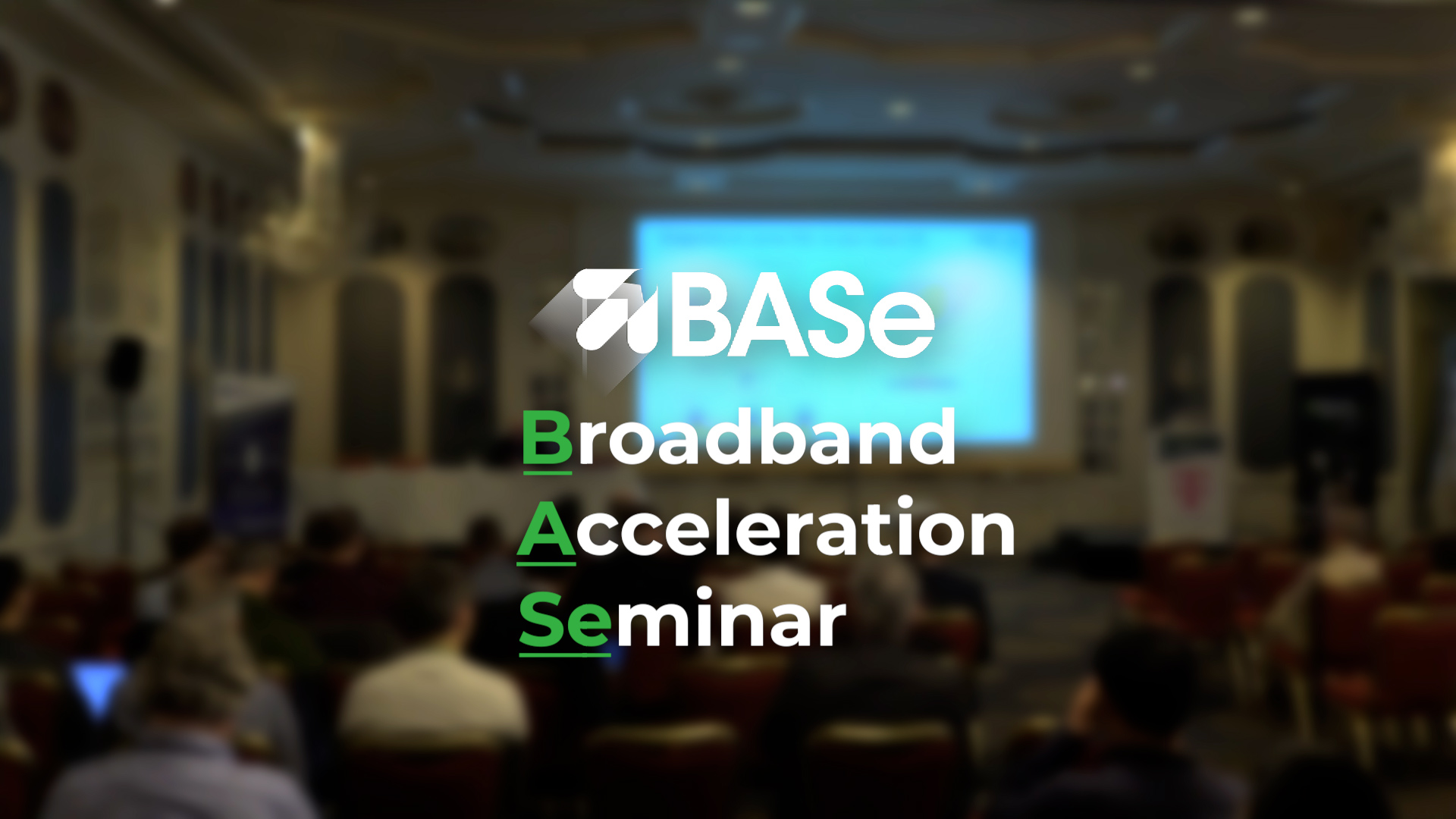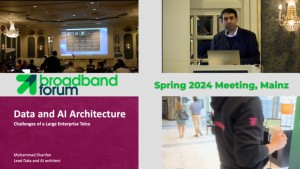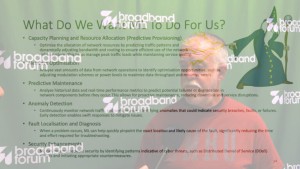By Christele Bouchat (Nokia), BBF Town Hall Innovation Series Co-Chair

Artificial Intelligence (AI) and Machine Learning (ML) technologies are opening up new possibilities for improved broadband network efficiency and reliability, and the boundless potential of AI and ML is mirrored in the impact it can have on our broadband connections.
Yet the adoption of such complex and still-developing technologies is not without its risks and challenges. Issues including privacy, data management and data protection need to be considered as part of any AI or ML strategy. But where there is risk, there is also opportunity.
These technologies have the power to reduce costs and boost efficiency, improve performance and reliability, deliver new use cases and more. All underpinned by a strategy based on the core principles of standardization.
It all starts with the data
It makes sense for any operator or service provider to first consider how to manage the key currency of AI and ML: data.
We can break down the AI architecture strategy into three pillars. Firstly, the platform in use (for example, toolstacks and vendor solutions). Aligning the data platform with the domain and considering where AI will sit within a network is key.
Secondly, we must consider the value, meaning, and ownership of data. Questions that address where the customer data is coming from, where it is stored, how to access it, who to give access to, and who is accountable for data in the home should not be understated, not least because of the sensitivity surrounding our data.
Thirdly, the domain (such as CPE domain or access technology) needs to be considered, including bringing the data as close to equipment as possible.
These three pillars must be considered in the context of the current landscape of telco operators, which contains legacy equipment and makes data accessibility and visibility a challenge. The correct architecture and collaboration is needed for it to be successful. Likewise, as ML experts may lack operational experience, it is critical that operational experts and data scientists work together to deliver on the promise of AI and ML.
Automated operations for improved QoS
At Broadband Forum’s Spring Member Meeting this year, we heard from experts in the AI & ML fields on how the technologies can significantly improve broadband networks. We learnt about performance monitoring and fault detection for optical fixed networks, with ML acting as the glue for data profiling, rapid response, and taking predictive measures before a problem arises. This has the potential to deliver greater Return on Investment (ROI) through automating network operations, intelligent fault diagnosis, and anomaly detection.
Anomaly detection techniques with recent technology breakthroughs like digital twins and Large Language Models (LLM) were also discussed, which have the potential to solve complex real-world problems in the telecoms industry. Access to data is key here, as it is used to monitor and measure real-time network parameters to extract key patterns and trends, automatically detecting anomalies in the network and suggesting potential solutions.
The potential of edge computing for enhancing end-user devices in use cases such as cloud robotics, Industry 4.0, smart city, smart mobility, and extended reality was also covered. It will allow for a decrease in system response times and better performance. One of the main challenges to achieving this is the orchestration of the complex and distributed cloud edge infrastructure.
The impact of AI/ML on ensuring Quality of Service was covered too, specifically how service providers need to leverage the intelligence of AI and ML in the cloud to digitalize and monitor vital data in their physical networks. Closed-loop automation with AI and ML can be embedded on all layers of the network in each network domain. Closed-loop automation leverages predictive analytics software that uses ML to infer the network’s status and predict its likely evolution. This can provide the likes of resource management provisioning without manual intervention.
Collaboration: the common theme
As well as the importance of data access, a common theme has been mentioned time and time again when it comes to delivering on AI/ML in the broadband network: collaboration.
“Network operators did not initially trust software to control our networks, and human intervention will continue to exist for a long time. But once we get comfortable and have completed a number of field trials, networks will be free to run by themselves. Collaboration and commonality of broadband standards will be key,” said one of the speakers, Old Dog Consulting’s Adrian Farrel.
We heard about projects including the EU-funded AI@EDGE, bringing together 20 companies from across the industry, including academia and SMEs. The project focused on AI beyond 5G networks and how AI/ML frameworks could deliver closed-loop network automation while preserving privacy in multi-stakeholder environments.
The IETF and its potential for collaboration with the Broadband Forum to develop universally adopted standards for ML data models was discussed too, pointing to the success of the ACTN and the Broadband Forum’s CloudCO project as examples to follow.
Standards are also tipped to play a key role in differentiation of the cognitive robotics market, with the integration of AI and ML from the outset helping robots learn continuously. Robots typically have the same hardware components and are deployed for similar purposes, leaving companies with little room to differentiate. Safety has been identified as a key differentiator, but also a huge hurdle in robotics. With a standardized way of communicating and a common protocol that acts as a “super brain”, a safe, secure, swarm-like intelligence can be created for a community of cognitive robots in many industrial and home settings.
Collaboration is sure to be a key theme as we meet in San Diego, United States for our next meeting where the industry will gather to drive broadband forward. Make sure you don’t miss your chance to hear from experts and speak on the latest developments in the Smart Home and IoT at Broadband Forum’s Fall Member Meeting. You can learn more and submit a proposal to speak at the meeting here.



